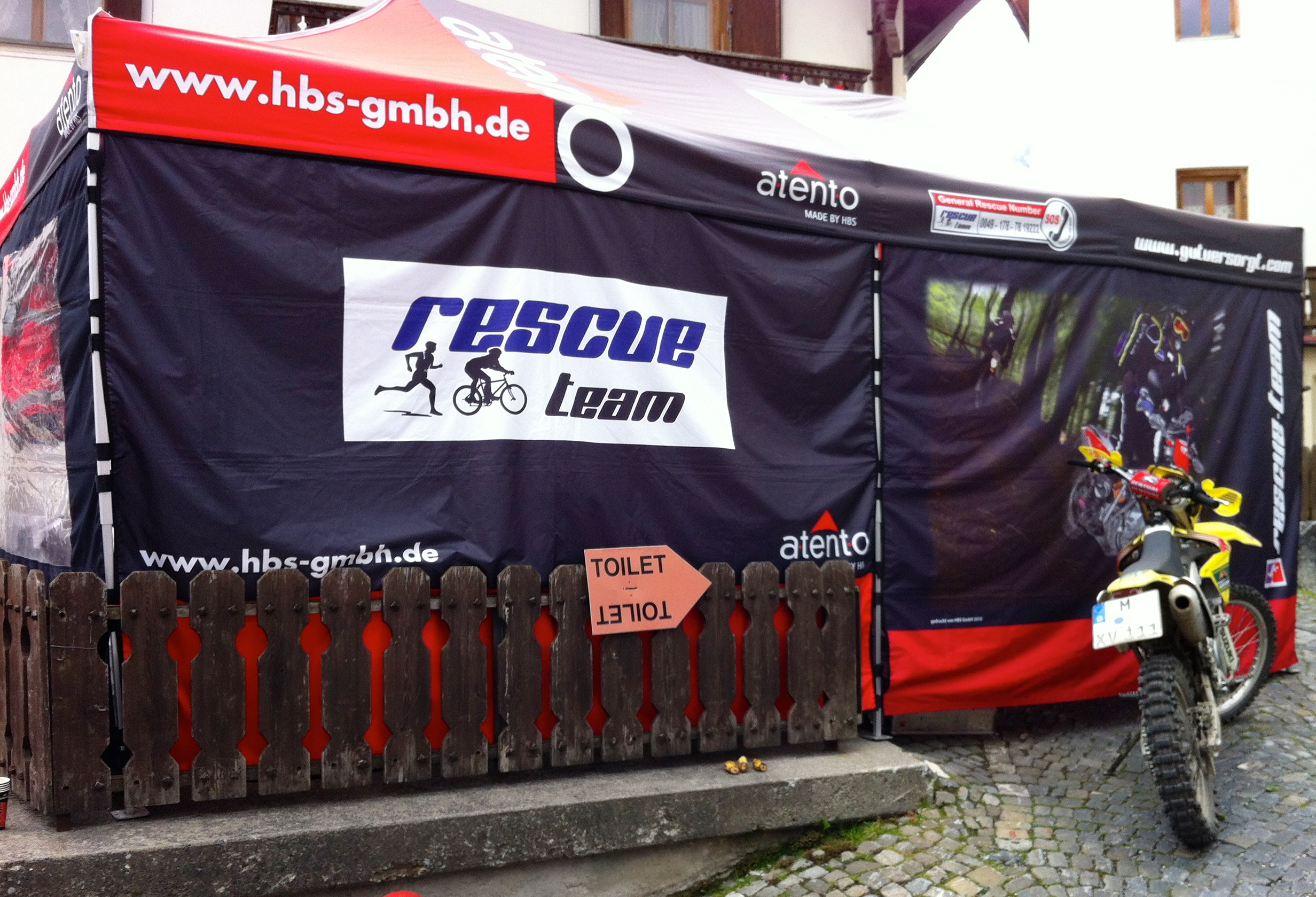Craft Bike Transalp is now in its 15th year and, since its inception, Andreas Hamel has headed up the Transalp Rescue Team. An event of this magnitude could not be without an experienced and efficient Rescue Team but few of us consider the ‘behind the scenes’ preparation, unless we are one of the few requiring a helicopter ride out. The Transalp Rescue Team is composed of four teams, each of two persons, eight team members, eight motorbikes and one rescue chief. Rescue Team members must have a medical background and be proficient on a dirt bike. The team is 50% paramedic and 50% doctors/nurses all with an intricate knowledge of the entire Transalp course, a stage cannot begin without the Recuse Team members being strategically placed on course.
On average, the helicopter is required between 5-10 times over the eight stages of Transalp, so far in 2012 there have been three helicopter calls over stages 1 and 2.
Andreas is intigural not only in rescue coordination but also in course design. When asked how long it takes to plan Transalp, the reply implies 12 months so as soon as the 2012 riders reach Riva Del Garda the Transalp team look toward 2013. Then Andreas hands me two booklets to assist in explaining what is involved in coordinating a rescue at Transalp, each booklet is 75 pages, part one contains the course from Oberammergau to Scuol and part two contains the course from Scuol to Riva Del Garda. These booklets are distributed amongst the regional ambulance, helicopter and hospital teams and contain all the information required to locate and mobilise an injured rider anywhere on the 619.41km course. The booklet contains firstly a detailed topographic map of the course, with the course route marked, along the route are upto 172 GPS waypoints that have previously documented GPS coordinates and elevation. When a call comes through to the rescue chief regarding an injured rider, the chief is able to locate the rider on the course map with the distance provided by his team and then coordinate a helicopter evacuation based on the GPS waypoints. The detail in each of the recue booklets is astounding but essential when considering the experience and efficiency required to coordinate a rescue team over such rugged terrain.
Andreas and his team manage rescue for a multitude of different sporting events all over the world.
As I am speaking with Andreas he receives a call that the last rider has reached the 30 km point, todays stage is 52km and we started racing at 0900. It is now 1357, these riders have completed 30km in close to two hours and still 22km to go. There is always some concern regarding the experience of riders that enter events like this and whether riders should be ‘vetted’ on their ability before being able to enter. At this point entry is open to everyone so you can only imagine the importance of a crack rescue team in an event of this magnitude with the unpredictable terrain and climate of the Alps.

